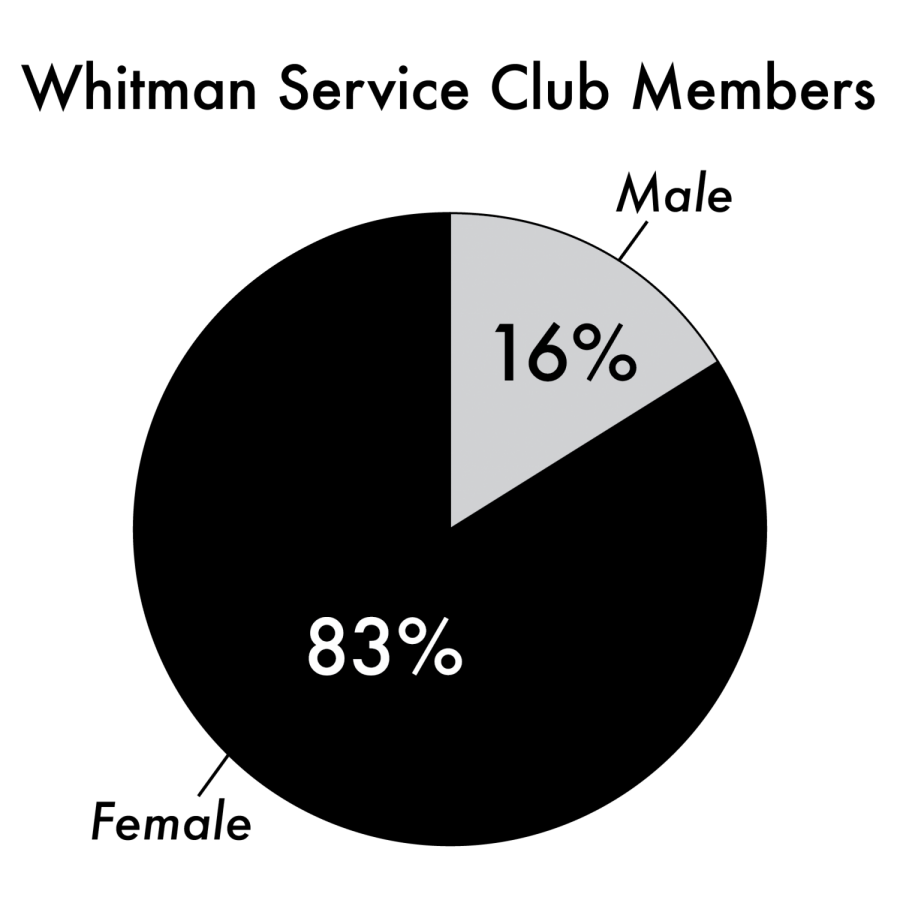Gender Disparity in Service on Campus
October 24, 2017
Community service at Whitman is a dramatically gendered affair. Of the 206 active members of campus service clubs, 83 percent identify as female. This disparity ebbs and flows through the membership of every club on campus. The closest any group comes to an equal gender distribution is 33 percent male.
This trend results in a particular irony in the case of Men Making Meals, a club that, per their website, “aims to assist struggling seniors, particularly the men, to retain their autonomy by learning to cook, a skill historically supplied by women.” Of the club’s seven members, six are female.
Whitman’s student body is obviously comprised of more females than males (57 percent versus 43 percent), but that figure does little to explain the enormity of the philanthropic gender gap.
Katy Woodall, program leader of Men Making Meals, agreed on this point and ventured a more sociological explanation.
“I think that it has to do with the feminization of care work and the socialization of women into roles that emphasize ‘service’ and working with the elderly, disabled, children, etc. and careers in education, public health and non-profits,” Woodall wrote over email, continuing:

“In general, I think women tend to be more socially engaged and community oriented at Whitman, and are also more likely to pursue majors like Psychology and Sociology that closely align with commitments to social issues and well-being of communities and individuals.”
Nationwide, a similar, albeit less dramatic, trend is apparent. A 2015 study by the Department of Labor Statistics found that, at an annual rate, 21.8 percent of men volunteer versus 27.8 percent of women. Applied to the Whitman student body, this figure would suggest a service participation rate of 64 percent female and 36 percent male. Though closer, this figure remains far from reality, offering little explanation.
This seems to be nothing new at Whitman, a fact both Woodall and Story Time Program Leader Claire Pepple attested to. “The past few years have had very similarly skewed gender breakdowns,” Pepple said.
The volunteering gap appears to be just part of a larger trend. A 2013 article in the Chronicle of Higher Education noted that female students tend to be more involved with campus activities than their male counterparts. This tendency is also apparent in the academic realm, where women again tend to outwork men. However, the discrepancies between the two are not as black and white as they may seem. In some regards, they simply constitute different approaches, with men opting for what some may describe as a more laid-back method. Of course, this option is likely only available to men because of their ability to rely upon the gender-gap, the advantages of which they still claim the lion’s share.
Perhaps this explains that staggering 83 percent figure. Women straining to break through the same barriers men still rest comfortably upon. It may not be that men are generally less capable of altruism, or lazier, but rather that, knowing the realities of surrounding society, they have a different set of priorities in their efforts to achieve a similar goal.





